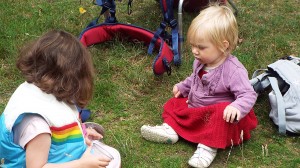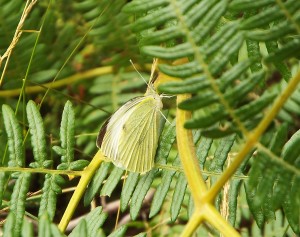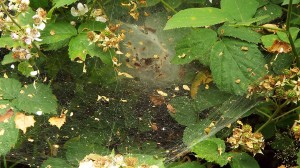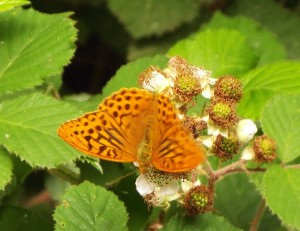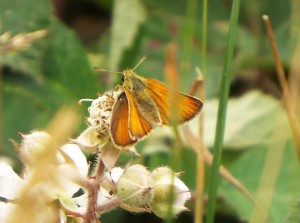John Fowles ‘The Tree’
John Fowles, in case you didn’t know, is a celebrated British author who died ten years ago. He wrote a number of fiction books – none of which I’ve read – and some of which were made into films – none of which I’ve seen. The only book of Fowles’ that I’ve read is a short, partly autobiographical text he wrote in 1979 called The Tree. It was given to me as a gift some years ago, and I write about it now after reading it for the second and last time before I pass it on to someone else (I prefer not to keep books unless I am likely to use them repeatedly).
I read The Tree with pleasure that there was someone out there who had similar feelings to my own, and who was able to express them beautifully. Fowles writes about nature: trees in particular. He compares the orderly garden of his childhood with the wild garden he owned as an adult. He says of his adult garden that he leaves it largely alone, in effect to my co-tenants, its wild birds and beasts, its plants and insects. He writes of two tawny owlets fresh out of the nest, sitting on a sycamore branch like a pair of badly knitted Christmas stockings and ogling down at this intruder into their garden. The gardens of Milton Keynes wouldn’t recognise this description as something to admire. Milton Keynes gardens like to have rectangles of uniform green grass growing vertically upwards, of equal length. They are bordered by bark chippings, also set in rectangular patches, or perhaps in circles, with carefully-pruned rose bushes spaced equally about. In fact, the order in the gardens reflects the order in the houses; the lawns are like outside carpets. There is little room for wildlife in such gardens. Especially when insecticides and fertilizer are used – and they are, in abundance. What’s more, the roses are growing on peat, dug up from a peat bog in Scotland; the effect of these gardens is to destroy, not help, wildlife. To me, they reflect a narrow vision of what nature should look like – simple shapes, managed, neat – they show little appreciation of biodiversity and wildness, which is a pity, because the countryside is shrinking, and gardens play an important role in housing and feeding animals, insects and plants.
Away from my rant, and back to the book, which is a beautiful piece about the author’s relationship with nature. He writes about how the randomness and diversity of nature, the multiple paths one can take in exploring woodland, inspire his work. I appreciate this; it’s accepted by many that interacting with nature is healthy and can be stimulating. I did, however, find myself in conflict with the author at one point. Now let me stress from the start that this might partly be because I failed to fully understand what he was talking about. I sometimes became lost in his poetic language; I’m a bit thick with this kind of thing. I struggle to understand Shakespeare’s plays and the more poetic parts of the Bible (I’m impressed when the words are explained to me though – impressed that people manage to cram so much in to sentences).
The part that I disagreed with was Fowles’ view of the relationship between science and nature. He says
Our approach to art, as to nature, has become increasingly scientized (and dreadfully serious) during the last century. It sometimes seems now as if it is principally there not for itself but to provide material for labelling, classifying, analysing – specimens for ‘setting’, as used to set moths and butterflies.
I’ve read on from this passage, and there’s a lot more to his view than this. I can’t summarise it neatly though. The first thing I object to is the suggestion that science is about labelling, classifying and analysing. I think it’s about understanding; certainly some labelling and classifying helps with understanding, but they aren’t the focus. There are some wonderful BBC interviews with the American physicist Richard Feynman available on-line in which, at one point, he talks about conversations he has had with arty friends. They say to him that in looking at plants (or whatever) scientifically he misses their true beauty. His response was that understanding how a plant works, how the atoms inside the plant interact, how water is drawn up the stem, and so forth, only increase your appreciation of the plant, they don’t decrease it. And I agree. If you appreciate the biodiversity of a woodland, how the species interact, the butterflies that appear at certain times of year, what they eat, the migrating birds that come and go, the fungi growing in trees, and so on, then you love the woodland all the more. It’s for this reason that I think educating young people – all people – about nature is so important; if they understand it, they care for it more. I agree that classifying all the plants and naming their parts can be a distraction from appreciating their beauty, but I don’t think science is about naming things.
I doubt that my differences with Fowles are deep, and like I said, they probably stem from my misunderstanding his words, or differences in what we believe constitutes science. He gives an example, which I recognise from my own life.
I came on my first Soldier Orchid, a species I had long wanted to encounter, but hitherto never seen outside a book. I fell on my knees before it in a way all botanists will know… I measured, I photographed, I worked out where I was on the map, for future reference… Yet five minutes after my wife had finally torn me away, I suffered a strange feeling. I realized I had not actually seen the three plants in the little colony we found. Despite all the identifying, measuring, photographing, I had managed to set the experience in a kind of present past, a having-looked, even as I was temporally and physically still looking.
I certainly fall into this kind of trap. Perhaps it’s a symptom of the kind of busy life I lead; I’ve spotted something, take note, and move on. E and I are trying to slow ourselves down, and spend time with the children in peace. (The peace doesn’t usually work out.)
